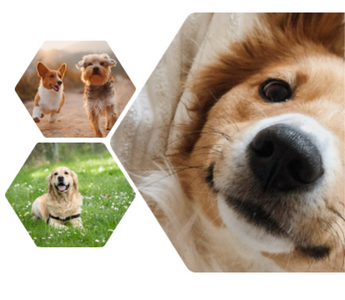Raw feeding is a popular way to feed dogs, and there are many different ways to do it. In this article, we will discuss four different types of raw feeding and their benefits and drawbacks.
Premade Raw Dog Food.
One type of raw feeding for dogs is premade dog food. This type of food is usually made from fresh ingredients and is designed to be fed as a complete meal to dogs. It can be bought in pet stores or made on your own by following a recipe.
Premade raw dog food is popular because it is easy to feed and provides all the nutrients a dog needs. It is also relatively cheap, making it a good option for people who don't have time to prepare their meals.
One downside of premade raw dog food is that it isn't always nutritionally balanced. In addition, some brands are high in sugar and fat, which can contribute to health problems in your dog. If you're looking for a healthy alternative to premade food, try preparing your meals using fresh ingredients.
You'll be able to customize them according to your dog's needs, and they'll be much more nutritious than premade food.'
BARF Model Raw Feeding.
BARF, or Biologically Appropriate Raw Food, is dogs' most well-known raw food diet. It emphasizes providing muscle meat, bones, eggs, fruits, vegetables, and certain dairy products.
The primary advantage of a raw diet is that it is natural; it is devoid of artificial additives, flavors, and preservatives, assuring that the quality is significantly superior to that of commercially processed dog food.
Additionally, BARF diets are superior to other raw model diets since they include vegetables, seeds, nuts, and fruits, resulting in a more full and balanced meal for your dog. Supporters of the BARF diet and pet parents also report significant improvements in their pets, including:
· improved skin and coat health
· enhanced energy and endurance
· whitening teeth and freshening breath
· improved weight management
· smaller, more solid, and less intense stools
· better digestion
· enhanced gastrointestinal, liver, and pancreatic health, and
· a more robust immune system.
Prey Model Raw Feeding.
The prey model raw (PMR) diet is defined by feeding just whole prey without any extra plant elements, the theory being that this offers a more natural method of eating, comparable to how their wild canine counterparts eat.
Using a semi-flexible ratio of 80/10/5/5, a PMR diet is centred on feeding your pet with a "whole" animal, consisting of the following:
· 80 percent muscle
· 10 percent bone content
· 5 percent liver
· 5 percent of other organs
The purpose of a PMR diet is to eliminate processed components frequently present in commercial dog food and potentially harmful side effects accompanying a plant-based diet. Some benefits of prey model raw feeding include:
• Improved bone density and strength
• Reduced inflammation and pain in joints
• Increased energy levels and vitality
• Improved digestion and elimination
• Better weight management
FrankenBARF Model Raw Feeding.
One type of raw feeding that is gaining popularity in dogs is FrankenBARF. This method involves feeding your dog raw meat in a bar, which the dog can eat directly from the package or put into their food bowl.
Many believe that FrankenBARF feeding is healthier for their dogs than traditional kibble feeding. The main reason is that raw meat contains all of the nutrients a dog needs. This includes vitamins, minerals, and proteins.
Some people also believe that FrankenBARF feeding helps to keep dogs leaner. However, Kibble can contain unhealthy fats and carbohydrates, leading to dog weight gain. Feeding your raw dog meat instead of Kibble will help keep them healthy and looking good on the inside and outside
Conclusion
Raw feeding is becoming increasingly popular in the dog world, as it offers many benefits for dogs and their owners. This article will explore four different types of raw feeding and discuss the benefits and risks associated with each. Hopefully, this information will help you make an informed decision about whether or not raw feeding is suitable for your dog.






